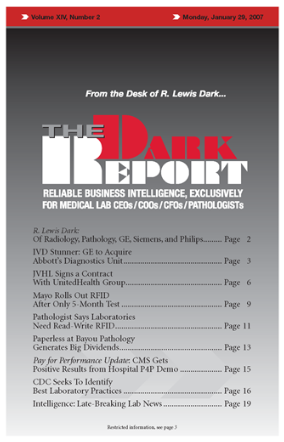CEO SUMMARY: After running a test project for less than six months, The Mayo Clinic is preparing to expand its use of RFID tags and scanners, focusing on endoscopy specimens. By expanding the use of RFID, Mayo will implement the technology in 41 operating rooms, providing care to more than 20,000 surgical patients this year. …
Mayo Rolls Out RFID after only 5-Month Test Read More »
To access this post, you must purchase The Dark Report.


